| On Saturday
the 7th of August, I slept in, went to my ritual brunch at the Golden
Pita, and didn't get the camera out until late in the afternoon.
I took a few train photos in the yard behind my home. |
|
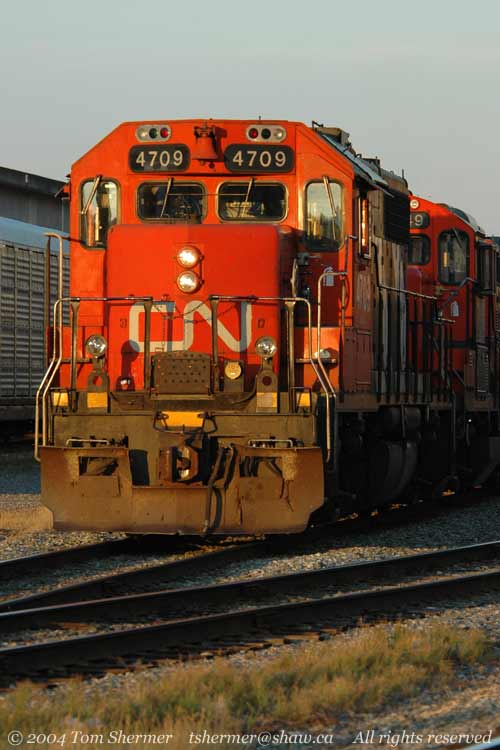 |
| For some
reason, the railway workers often seem to be puzzling something
out. |
|
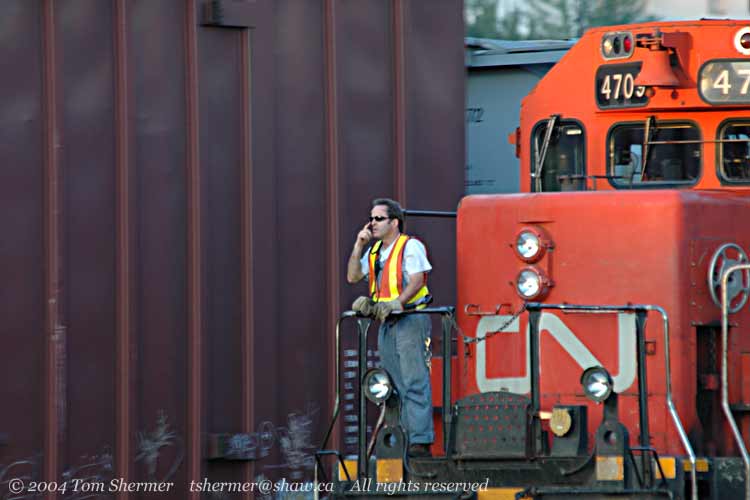 |
|
Maybe he was trying
to figure out how much finesse to use on the rail switch.
|
|
 |
|
After my jaunt by the
railway, I returned home, where I caught my neighbor Smudge giving
me the eye.
|
|
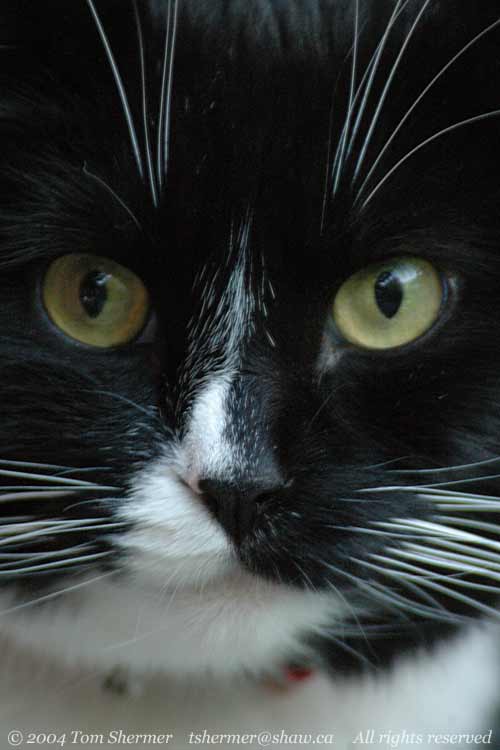 |
|
On Sunday, I got up
mid-morning and went over to Wal-Mart and bought myself a pair
of Billy boots. My plan was to don the boots and take a walk out
onto the tidal mudflats of Boundary Bay. It turned out to be a
good plan, even though I didn't see many birds out on the mudflats.
It was good because I got accustomed to the boots (which were
surprisingly comfortable with my orthotics inside them) and because
the bay holds some interesting stuff.
The first cool thing
I noticed was that there were thousands upon thousands of little
conical shells out on the mud. Some sort of snail lives in them,
I guess. Each of these in about 2 cm. long. They were just scattered
everywhere, and there were places where it was impossible to walk
without stepping on them.
|
|
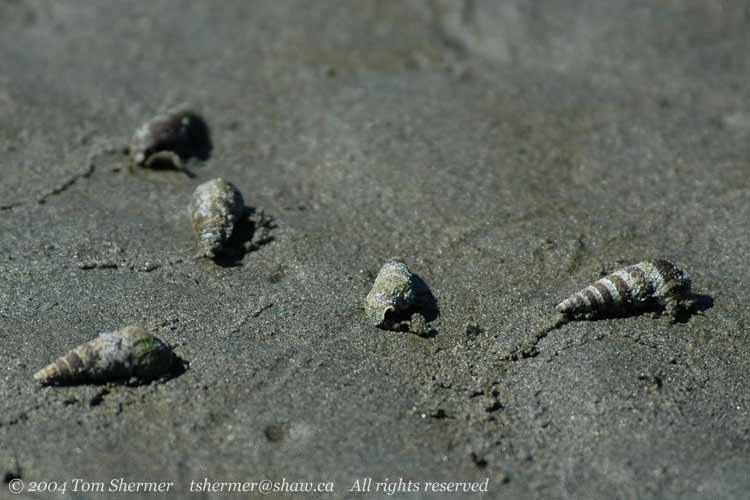 |
|
A bit further out,
I came across many little mounds in the mud, each of which looked
like it was made by extruding a tube of toothpaste. Here's one
of the mounds.
|
|
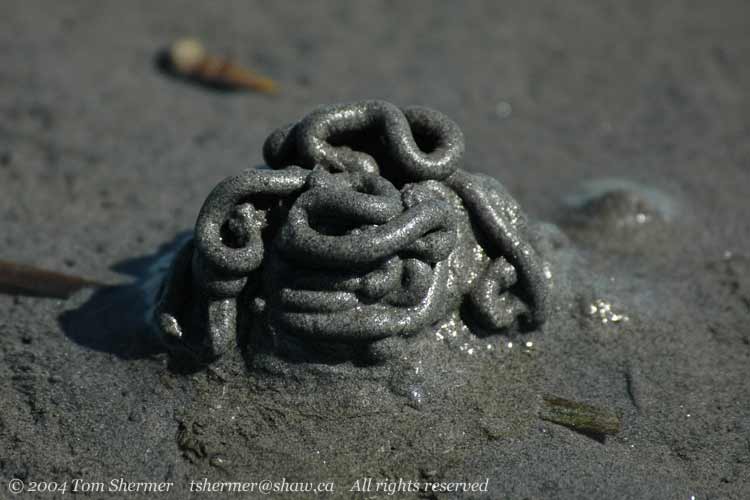 |
|
They're obviously formed
by some critter under the surface spitting out a stream of mud.
Maybe the snails do this? Here's another mound, in a little bit
of water.
|
|
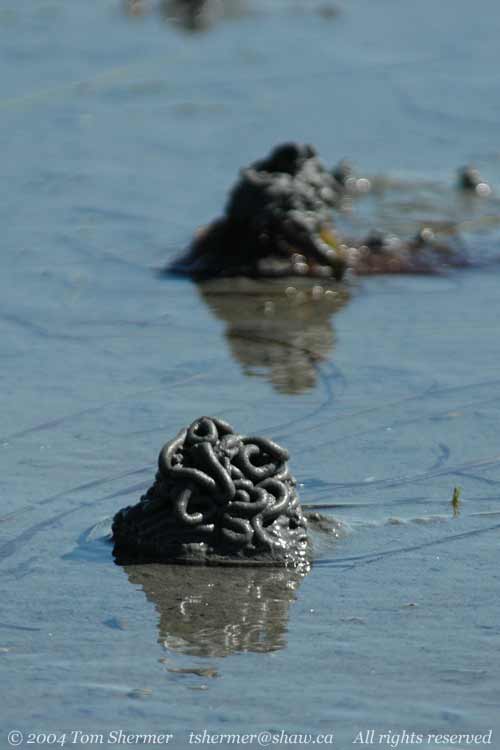 |
|
I also came across
patches of mud where there were globules of some other substance.
At first I thought that it might be some petroleum product from
a spill, but the globules seemed to hold together too well for
that. I figure they must be some animal's egg sac. In shallow
or no water, the sacs were pancake- or sand-dollar-shaped.
|
|
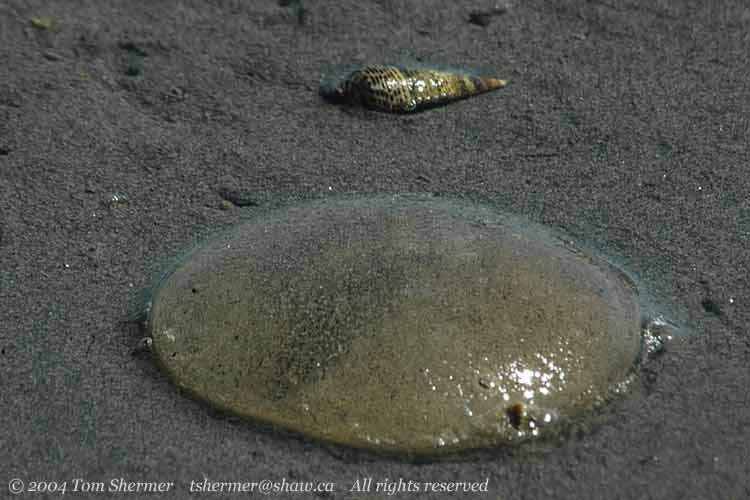 |
|
But in deeper water,
they were more ellipsoidal.
|
|
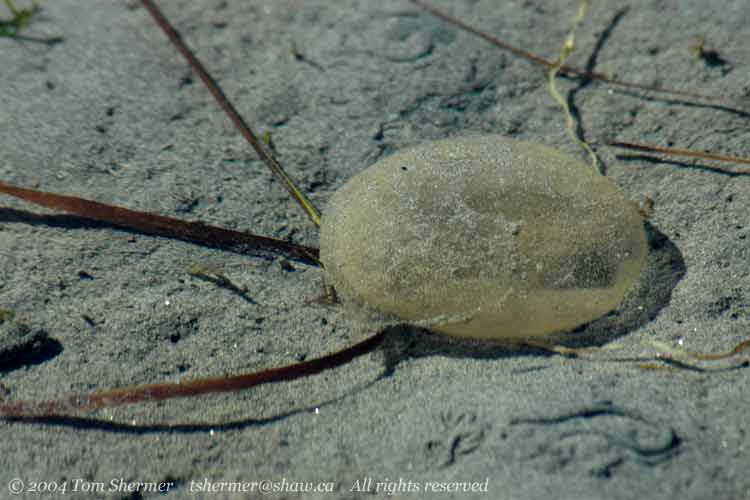 |
|
On my way back in,
I stopped to take some photos of the grasshoppers that were about.
These guys have striking butterfly-like black-and-white wings,
which you can't see when they sit still.
|
|
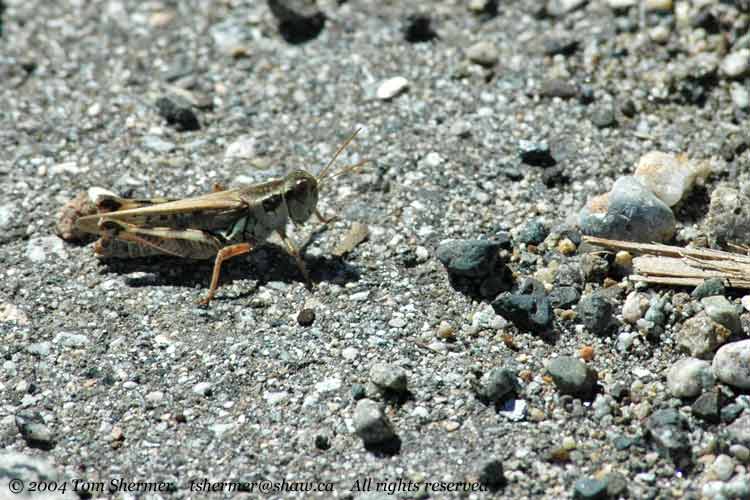 |
|
It had taken me a two
hours to trudge out from the Boundary Bay dyke to the edge of
the ocean and back, all in the hot midday sun. I was fairly wiped
out, but I decided to go over to the Tsawassen ferry jetty and
see what was there. I found the usual Black Oystercatchers, and
a few gulls, but not much else.
|
|
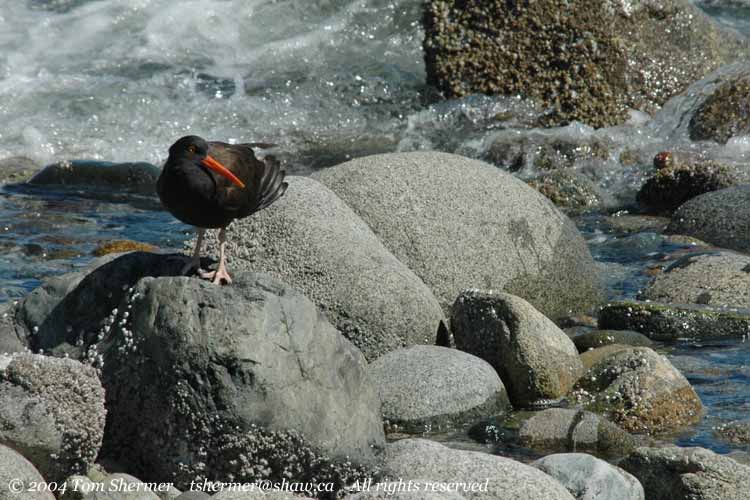 |
|
I'm working on learning
to identify gulls. Gulls are a real challenge; some species have
incredible variety, and species appearance can overlap. Here's
a gull making some sort of statement. He's moderately easy to
identify; he's a white-headed gull, with a black tail and yellow
legs. He has no brown on his neck, and (not visible in this picture)
he has a red orbital ring (small ring around his eye). A couple
of breeding-plumage adult gulls fit this description, but the
cincher on this one is that there is no black or red spot on his
bill. That pretty much means that he's a Mew Gull.
|
|
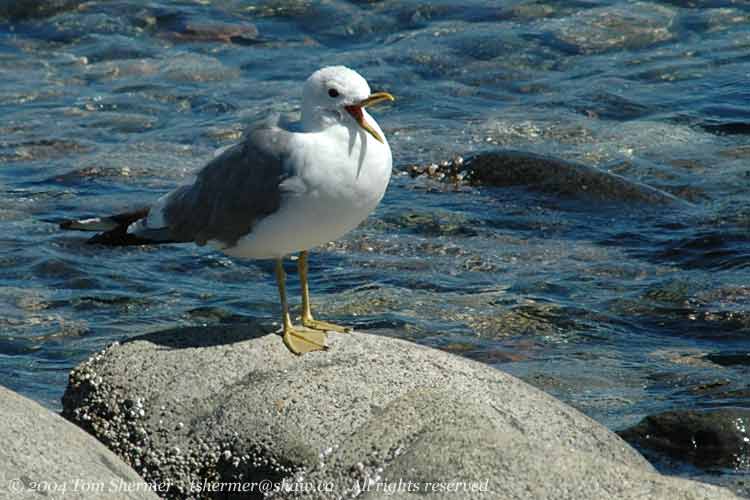 |
| Here's a
more difficult gull. He's a white-headed gull with black tail. However,
this guys legs are grey, and he's got a long bill with a red spot
at the end of the lower mandible. Second-winter Mew Gulls have grey
legs, but not the red spot on the bill. Second-winter California
Gulls also have grey legs, but a black spot on the bill (and more
brown overall). This could be an adult breeding-plumage Herring
Gull, which normally looks like this with pink legs; Herring Gulls
are known to have much variation in the color of their bare parts.
Herring Gulls are known to winter in this area, but I'm not sure
if gulls think it's winter in August. So for now, this guy's species
will just have to remain a mystery. |
|
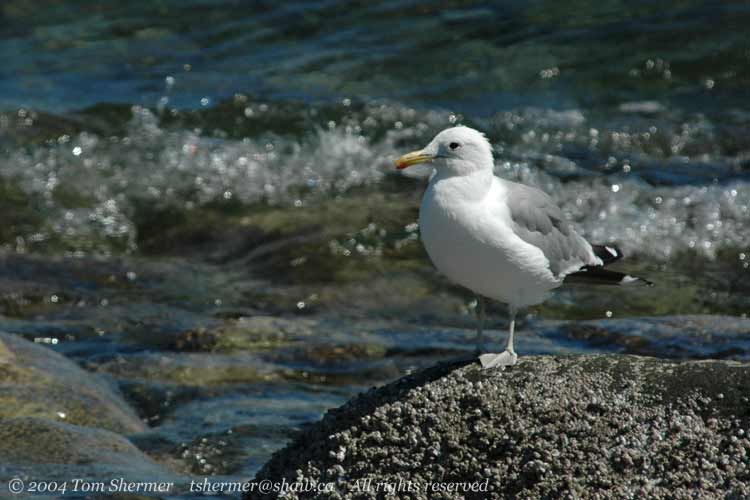 |
| After Tsawassen,
I headed home, but I couldn't resist shooting some more train shots.
The shiny tanker cars were pretty in the sunlight. |
|
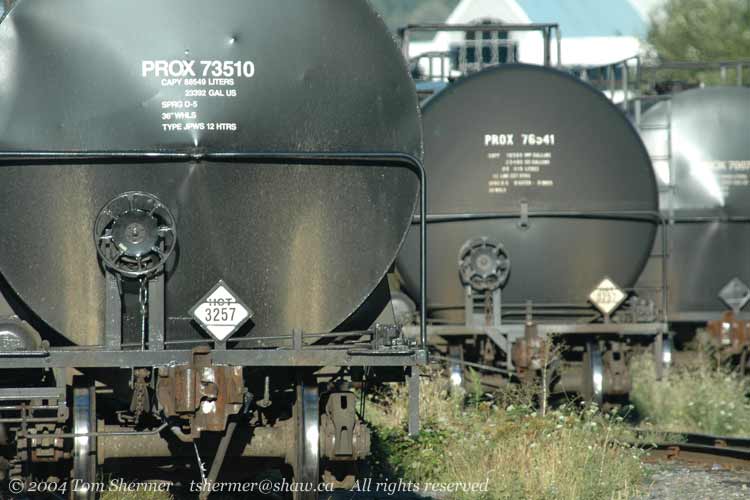 |
|
Until next time,
Tom, the mudstompin'
madman.
|
|